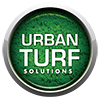Securing and Seaming
Securing and Seaming: Achieving a Unified and Steady Artificial Lawn
While the visual appeal of artificial grass is undeniable, its efficacy and longevity rely significantly on the details of its installation. Two critical aspects of this are securing the grass in place and seamlessly joining multiple pieces. Both these steps ensure a smooth, consistent appearance and prevent potential issues down the line.
The Necessity of Securing Artificial Grass
Once the artificial grass is laid out, it’s crucial to secure it firmly to the ground. This serves multiple purposes:
Stability: Especially in areas with heavy foot traffic, unsecured turf can shift, leading to unevenness or even potential tripping hazards.
Aesthetics: Properly secured grass ensures a taut and smooth surface, free from unsightly wrinkles or bulges.
Durability: Secured grass is less likely to get pulled up at the edges, prolonging its lifespan and maintaining its appearance.
Tools for Securing
Specialised tools are used to keep the artificial grass anchored:
Nails or Pegs: These are driven into the ground at regular intervals around the edges of the turf and at various points across its surface. Made of non-corrosive materials, these nails or pegs provide a firm hold without causing damage to the grass.
The Art of Seaming
In situations where the installation area is larger than a single roll of artificial grass, or there are intricate designs, multiple pieces of turf need to be joined. This joining process, known as seaming, is pivotal for a few reasons:
Visual Consistency: Proper seaming ensures that the joint between two pieces is invisible, maintaining the illusion of a continuous grassy expanse.
Functional Integrity: Well-seamed joints are robust and prevent issues like water seepage or weed growth at the junction.
Techniques and Tools for Seaming
Seaming Tape and Adhesive: A strong adhesive is applied to a special seaming tape, which is then positioned under the edges of the two turf pieces being joined. When the adhesive sets, it forms a bond stronger than the turf itself, ensuring the seam remains intact under various conditions.
Directional Consistency: When joining two pieces, it’s crucial to ensure the grass fibres on both pieces run in the same direction. This guarantees a consistent look and feel across the seam.
The steps of securing and seaming might seem minor in the grand scheme of artificial grass installation, but they are foundational for a successful, long-lasting, and visually pleasing result. By giving these steps the attention they deserve, property owners can enjoy a beautiful and durable artificial lawn for years to come.
